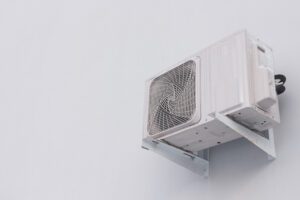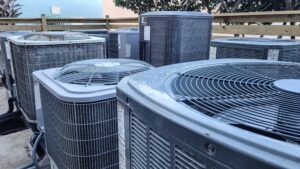Introduction to Furnace Troubleshooting
Before you reach for your phone to call a professional because your furnace has stopped working, take a moment. Many furnace problems can be solved with a few simple checks. This guide will help you do just that. It’s meant to save you time and money. Remember, not every furnace issue needs expert hands. Sometimes, the solution is simpler than it seems. Let’s start by understanding what we often overlook – the basics. Check if your thermostat is set right. Make sure the furnace switch is on. Don’t forget to look at the filter; a dirty one can cause trouble. And, ensure the circuit breaker hasn’t tripped. These steps might seem too basic, but you’ll be surprised how often they are the answer.
Common Signs Your Furnace Needs Attention
When your furnace starts acting up, it’s like your car making strange noises – you know something’s not right. Keep an eye (and ear!) out for these straightforward signs that scream, “Hey, I need some help here!” First, if your furnace is refusing to turn on or if you’re having to play with the thermostat more than usual just to get a bit of warmth, your furnace is waving a red flag. Then there’s the noise – not the usual hum but banging, whining, or scraping sounds. These are your furnace’s cry for attention, saying parts inside might be loose or broken. Notice a hike in your heating bill? Your furnace could be working overtime to keep up, indicating it’s not as efficient as it once was. Last but surely not least, if your home feels like you’re switching between a desert and the arctic, with some rooms hot and others cold, your furnace is struggling to distribute air evenly. Each of these signs tells you it’s time to give your furnace a bit of TLC or call in a pro to take a look.
Initial Steps: Safety Precautions Before Troubleshooting
Before diving into the heart of troubleshooting your furnace, prioritize safety first. Always turn off the power to the furnace. This can be done at the main electrical panel by flipping the switch that powers your heating system. It’s simple but crucial. Next, if you’re dealing with a gas furnace, know where the gas shutoff valve is located. If at any point you smell gas or suspect a leak, stop what you’re doing immediately and call a professional. Avoid lighting matches or turning on lights as this could ignite the gas. Remember, tackling furnace issues is not worth risking your safety. Keep these precautions in mind as you proceed.
Checking the Thermostat: A Simple Beginning
Before you dive into thinking your furnace has gone kaput, start with the basics: your thermostat. It’s a simple check but often overlooked. First, ensure the thermostat is set to “heat” and not “cool” or “off.” Sounds obvious, right? But it’s a common slip-up. Next, check the temperature setting. It should be set higher than the current room temperature to kickstart the furnace. If your thermostat is programmable, verify that it’s following the correct schedule. Sometimes, a simple battery change is all it needs. If it’s hardwired, make sure the circuit hasn’t tripped. Also, double-check if the thermostat’s screen is on and responsive. If it’s not, it might be time for a reset or a call to check its wiring. A quick fix here can save you time and money, proving that sometimes the smallest adjustments make the biggest difference.
Inspecting the Furnace Filter: A Crucial Check
A dirty or clogged furnace filter isn’t just about the air quality in your home; it can cause your furnace to work harder than it needs to, leading to inefficiencies or even a complete shutdown. It’s crucial to check this before you pick up the phone to call for repairs. Firstly, locate your furnace filter—usually found in the furnace itself or in a return air duct. If the filter looks dirty or clogged, it’s time for a change. Most filters need a swap every 90 days, but if you have pets or a dusty environment, you might need to do it more often. A clean filter not only helps your furnace run smoothly but also can prevent future problems and save you money on unnecessary repairs. Remember, this is a simple step, but it’s an essential one.
Examining the Furnace’s Power Supply and Circuit Breakers
First off, check if your furnace has power. It sounds simple, but sometimes the solution is as straightforward as making sure the unit is plugged in and the power switch, usually located on or near the furnace, is turned on. Next, take a look at your home’s main electrical panel. Sometimes, the problem isn’t with the furnace itself but with a tripped breaker or a blown fuse. Find the circuit breaker or fuse that controls the furnace. If you spot a tripped breaker, flip it off, then back on. If you’re dealing with a blown fuse, you’ll need to replace it. Before messing with the panel, though, ensure your hands are dry and you’re standing on a dry surface, safety first. These steps are simple but effective and can save you from an unnecessary repair call.
Investigating Unusual Furnace Noises and What They Mean
When your furnace starts making strange noises, it’s trying to tell you something. Ignoring these sounds can lead to bigger, costlier problems down the line. Let’s break down the common culprits behind these noises and what they potentially mean. A whistling sound usually points to a problem with airflow. Check your furnace’s filter. If it’s dirty, replace it. A simple filter swap might be all you need to silence the whistle. Banging or popping noises often occur when the furnace’s metal ductwork expands and contracts as the system heats up and cools down. This is normal, but if it’s loud, the ductwork might need securing or insulating. Rattling noises suggest something is loose. First, check the cover panels to ensure they’re screwed on tightly. If the noise persists, it might be inside the furnace, which means it’s time to call a professional. Screeching or squealing sounds can indicate a problem with the blower motor or its belt. It could be something as simple as needing lubrication, or it may require a part replacement. Listening to your furnace and understanding what its noises mean can save you from a cold night or an expensive repair job. Always start with the easiest solutions, like checking the filter, and work your way up to the more complex issues. If you’re ever unsure, don’t hesitate to call a professional. It’s better to be safe and ensure your furnace runs efficiently and safely.
Understanding the Importance of Regular Furnace Maintenance
Regular furnace maintenance isn’t just about keeping your house warm; it’s about preventing bigger, more expensive problems down the road. Ignoring your furnace can lead to inefficiency, higher energy bills, and eventual breakdowns. Essentially, think of your furnace like a car. You wouldn’t drive your car for years without changing the oil, right? The same goes for your furnace. Regular check-ups can catch small issues before they turn into big ones. This means cleaning or replacing the air filter, checking the thermostat settings, and ensuring the furnace’s pilot light is on and functioning correctly. Not only does this extend the life of your furnace, saving you money in the long run, but it also ensures your family stays warm and safe during the coldest months. Plus, detecting gas leaks or electrical issues early can prevent dangerous situations. So remember, a little maintenance can go a long way in keeping your furnace running efficiently and your home comfortable.
Knowing When to Call a Professional for Furnace Repair
Sometimes, figuring out if you need a professional to look at your furnace can be as tricky as understanding the furnace itself. However, there are clear signs that shout, “It’s time to call in the pros!” If you notice your furnace isn’t heating up your home evenly or sufficiently, it could be more than just a simple fix. Strange noises like banging, whistling, or grinding are also red flags. These sounds might mean something inside the furnace is loose, broken, or needs immediate attention. Another giveaway? An unexpected rise in your energy bill. This spike often indicates your furnace is working harder than it should, possibly due to a malfunction or inefficiency. Lastly, if your furnace is over 15 years old and constantly needs small repairs, investing in professional help or considering a replacement might save you more money and headaches down the line. Remember, fiddling with your furnace without proper knowledge can be dangerous. When in doubt, calling a certified technician is always the safer bet. They have the tools, skills, and experience to safely diagnose and fix your furnace issues, ensuring your home stays warm and safe.
Summary and Final Thoughts on Furnace Troubleshooting
Before you pick up the phone to call a professional, remember, some furnace problems can be solved with a few simple checks. It’s about knowing your furnace a bit better and not rushing to conclusions. First, always check your thermostat to make sure it’s set correctly. This is a common oversight but an easy fix. Then, take a look at the furnace filter. A dirty filter can cause more problems than you might think. Change it if it’s filled with dust. Also, make sure all vents are unblocked to keep that warm air flowing freely. Lastly, a quick peek at the circuit breaker can save you a call – it might have simply tripped. Through these steps, you can often find simple solutions to what might seem like big problems. But remember, if you ever feel out of your depth, it’s wise to call in a professional. Keeping your furnace running smoothly doesn’t just keep you warm; it can also save you money and extend the life of your furnace. So, while it’s great to tackle what you can on your own, never hesitate to reach out for help when you need it.




